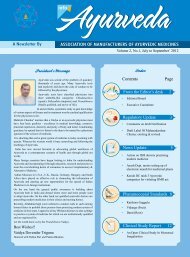3 In the Drugs and Cosmetics Rules, 1945 - amam-ayurveda.org
3 In the Drugs and Cosmetics Rules, 1945 - amam-ayurveda.org
3 In the Drugs and Cosmetics Rules, 1945 - amam-ayurveda.org
You also want an ePaper? Increase the reach of your titles
YUMPU automatically turns print PDFs into web optimized ePapers that Google loves.
25whichever is higher) is recommended for oral dosing. Animals should beobserved for 14 days after <strong>the</strong> drug administration, <strong>and</strong> minimum lethal dose(MLD) <strong>and</strong> maximum tolerated dose (MTD) should be established. If possible,<strong>the</strong> target <strong>org</strong>an of toxicity should also be determined. Mortality should beobserved for up to 7 days after parenteral administration <strong>and</strong> up to 14 days afteroral administration. Symptoms, signs <strong>and</strong> mode of death should be reported, withappropriate macroscopic <strong>and</strong> microscopic findings where necessary. LD 10 <strong>and</strong>LD 50 should be reported preferably with 95 percent confidence limits. If LD 50 scannot be determined, reasons for <strong>the</strong> same should be stated.The dose causing severe toxic manifestations or death should be defined in <strong>the</strong> case ofcytotoxic anticancer agents, <strong>and</strong> <strong>the</strong> post-dosing observation period should be to 14days. Mice should first be used for determination of MTD. Findings should <strong>the</strong>n beconfirmed in rat for establishing linear relationship between toxicity <strong>and</strong> body surfacearea. <strong>In</strong> case of nonlinearity, data of <strong>the</strong> more sensitive species should be used todetermine <strong>the</strong> Phase I starting dose. Where rodents are known to be poor predictors ofhuman toxicity (e.g., antifolates), or where <strong>the</strong> cytotoxic drug acts by a novelmechanism of action, MTD should be established in non-rodent species.1.1.2 1.1.2 Repeated-dose Systemic Toxicity Studies: These studies (see Appendix I,item 4.2) should be carried out in at least two mammalian species, of which oneshould be a non-rodent. Dose ranging studies should precede <strong>the</strong> 14-, 28-, 90- or180- day toxicity studies. Duration of <strong>the</strong> final systemic toxicity study will depend on<strong>the</strong> duration, <strong>the</strong>rapeutic indication <strong>and</strong> scale of <strong>the</strong> proposed clinical trial. (see Item1.8). If a species is known to metabolize <strong>the</strong> drug in <strong>the</strong> same way as humans, itshould be preferred for toxicity studies.<strong>In</strong> repeated-dose toxicity studies <strong>the</strong> drug should be administered 7 days a week by <strong>the</strong>route intended for clinical use. The number of animals required for <strong>the</strong>se studies, i.e.<strong>the</strong> minimum number of animals on which data should be available, is shown in Item1.9.Wherever applicable, a control group of animals given <strong>the</strong> vehicle alone should beincluded, <strong>and</strong> three o<strong>the</strong>r groups should be given graded doses of <strong>the</strong> drug. The


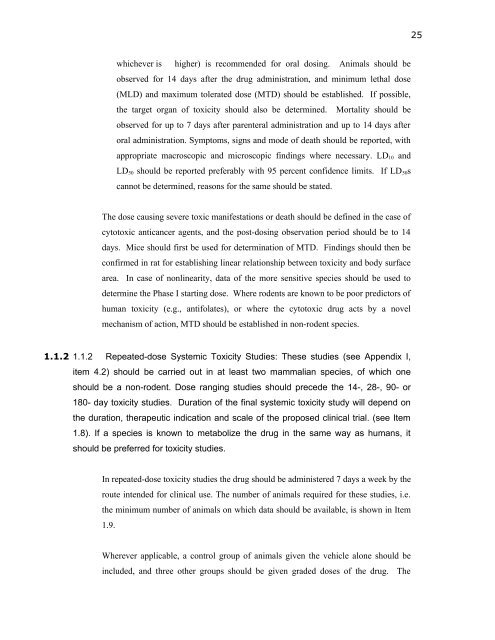

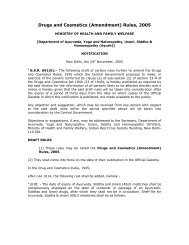
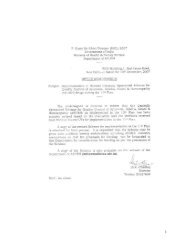





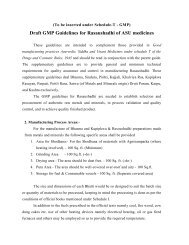

![[To be published in Gazette of India Part II Section 3, sub-section iii]](https://img.yumpu.com/28570283/1/190x245/to-be-published-in-gazette-of-india-part-ii-section-3-sub-section-iii.jpg?quality=85)

